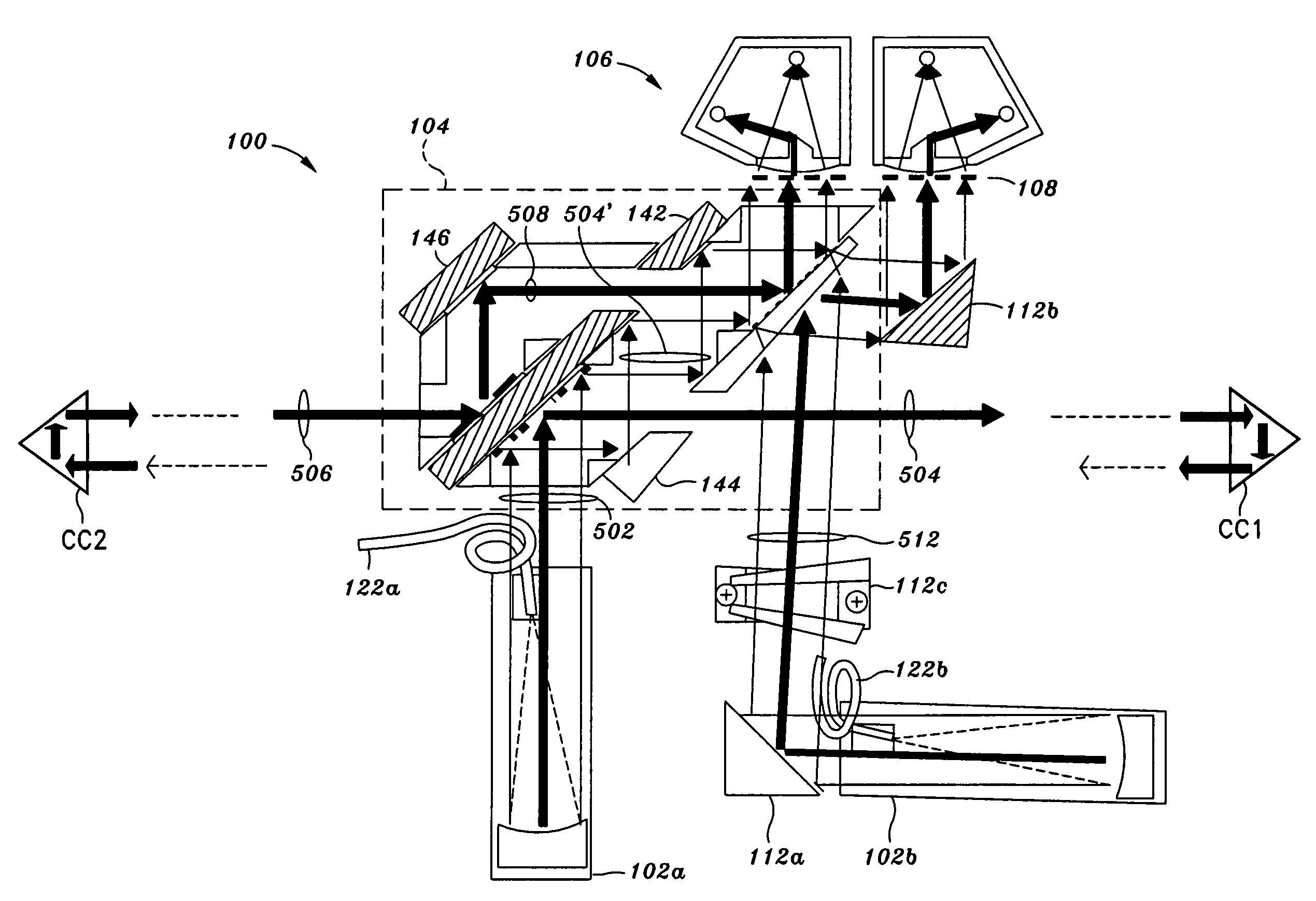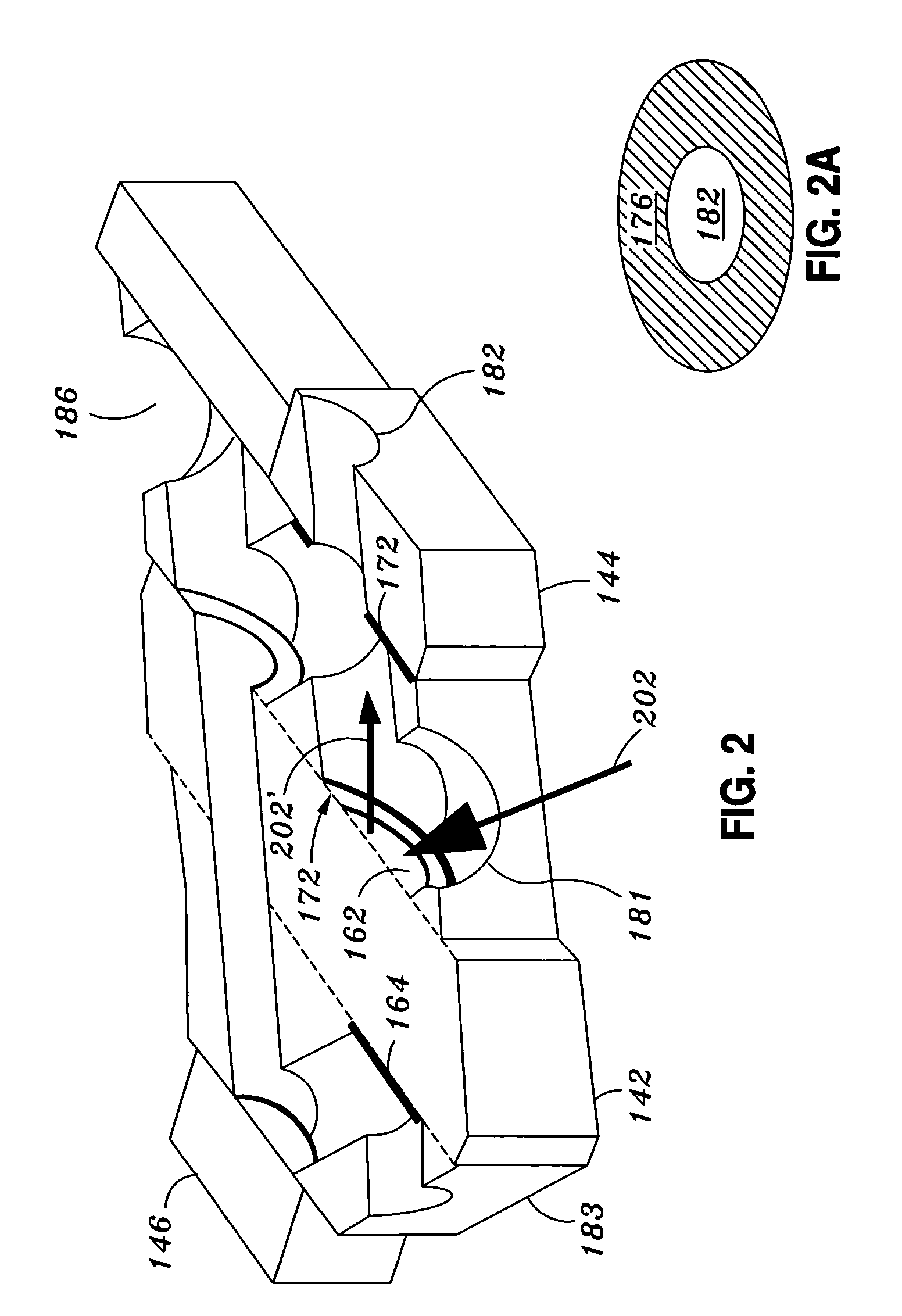Apodization of beams in an optical interferometer
a beam and optical interferometer technology, applied in the field of interferometry, can solve the problems of reducing the signal of the photo-detector, reducing the resolution of the homodyne interferometer, and difficult to measure the change in distance significantly smaller, so as to avoid diffraction and reduce diffraction
- Summary
- Abstract
- Description
- Claims
- Application Information
AI Technical Summary
Benefits of technology
Problems solved by technology
Method used
Image
Examples
Embodiment Construction
[0028]The following description of the present invention is presented with respect to a specific interferometer device that was under study at the time of the invention. However, it will be clear to one of ordinary skill, from the following discussion, that the present invention can be adapted for use in any kind of optical interferometer.
[0029]FIG. 1 shows the basic components of an optical interferometer in the context of a specific illustrative embodiment. The interferometer configurations that is shown in the figure is known as a “common path heterodyne interferometer” (CoPHI). The CoPHI interferometer shown in FIG. 1 operates is arranged in a “racetrack” (RT) configuration. A source beam directed to the optical component 104 is provided by a collimator 102a. In the specific embodiment shown, the collimator 102a is an off-axis parabolic collimator. This component is described in more detail in U.S. application Ser. No. 10 / 349,758. It can be appreciated of course that any other s...
PUM
 Login to View More
Login to View More Abstract
Description
Claims
Application Information
 Login to View More
Login to View More - R&D
- Intellectual Property
- Life Sciences
- Materials
- Tech Scout
- Unparalleled Data Quality
- Higher Quality Content
- 60% Fewer Hallucinations
Browse by: Latest US Patents, China's latest patents, Technical Efficacy Thesaurus, Application Domain, Technology Topic, Popular Technical Reports.
© 2025 PatSnap. All rights reserved.Legal|Privacy policy|Modern Slavery Act Transparency Statement|Sitemap|About US| Contact US: help@patsnap.com



